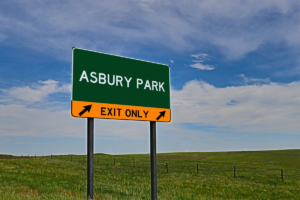Can we finally agree that a primary source of N.J.’s woes – both political and educational – flows from the legacy of home rule? Our local governance is so energetically parsed that we have created an environment ripe for corruption and bribery. In the educational sector, this leads to the most inefficient, segregated, and expensive school system in the country.
Here’s some pundits on N.J.’s most recent political scandal. From Brad Parks (formerly of the Star-Ledger) in the Wall Street Journal:
In most states, the local unit of government is the county; in others, it’s the municipality. In Jersey, we have both, and lots of them. There are 566 municipalities—California, with four times the population, has only 480—and each has a mayor and/or councils. The 21 counties have their various freeholder boards and utility commissions and there are also 120 state legislators. When that many people have their hands in the cookie jar —and there are that many cookie jars—is it any wonder that you get people selling Oreos out of their trunk in the parking lot to make a little extra cash on the side?
Murray Sabrin of Politickernj agrees:
The most pervasive “corruption” in the State of New Jersey is the size and scope of government. Government spending has grown for decades, far exceeding the rate of inflation, making the tax burden in New Jersey one of the highest in the nation. And we have yet to see indictments of anyone involved in the scandal ridden $8.5 billion school construction fiasco and other state boondoggles.
However, if we really want to end low level political corruption in New Jersey and elsewhere, legal plunder must be abolished by streamlining the size and scope of government.
From Bob Ingle and Sandy McClure
, co-authors of “The Soprano State: New Jersey’s Culture of Corruption” in the New York Times:
With 566 municipalities in New Jersey (California has only 480), 603 school districts (more than the states of Maryland, Delaware and Virginia combined), 187 fire districts, 486 local authorities, 92 special taxing districts, and 21 county governments, which tend to be units controlled by entrenched political bosses, there’s a lot of opportunity to cheat, steal and corrupt the system
It’s one thing to recognize it. It’s another thing to fix it because the root of the corruption is itself the obstacle to reform. These are the guys who are going to eliminate their own jobs?
In fact, our overabundance of school districts dilutes the two main drivers of school reform: school choice and merit pay. For example, while No Child Left Behind includes a provision to transfer kids from a “School in Need of Improvement” to a higher-performing school, the typical district in N.J. only has only one high school because the districts are so small. And kids aren’t allowed to transfer to a better school if it means crossing district boundaries. Our fragmented school system empowers the leadership of NJEA and dilutes local districts’ ability and wherewithal to effect change. Merit pay? Not likely.
(How will Jersey fare with the $5 billion in stimulus funds contingent on connecting educators’ compensation to performance and the expansion of charter schools? We need a DOE [and a governor] that actively promotes and facilities the development of successful charters; then we may be able to get some momentum and, with it, some cash.)
Corzine seems to get it. He has taken baby steps to consolidate districts and standardize curricula, but local resistance is so strong that he can’t get the legislation passed to take make substantive strides. The commotion incited by the elimination of 13 non-operating school districts was disheartening to anyone interested in educational progress. Until we find it within ourselves to sacrifice local control for effective and efficient government and education, the best we’ll do is creep along.



